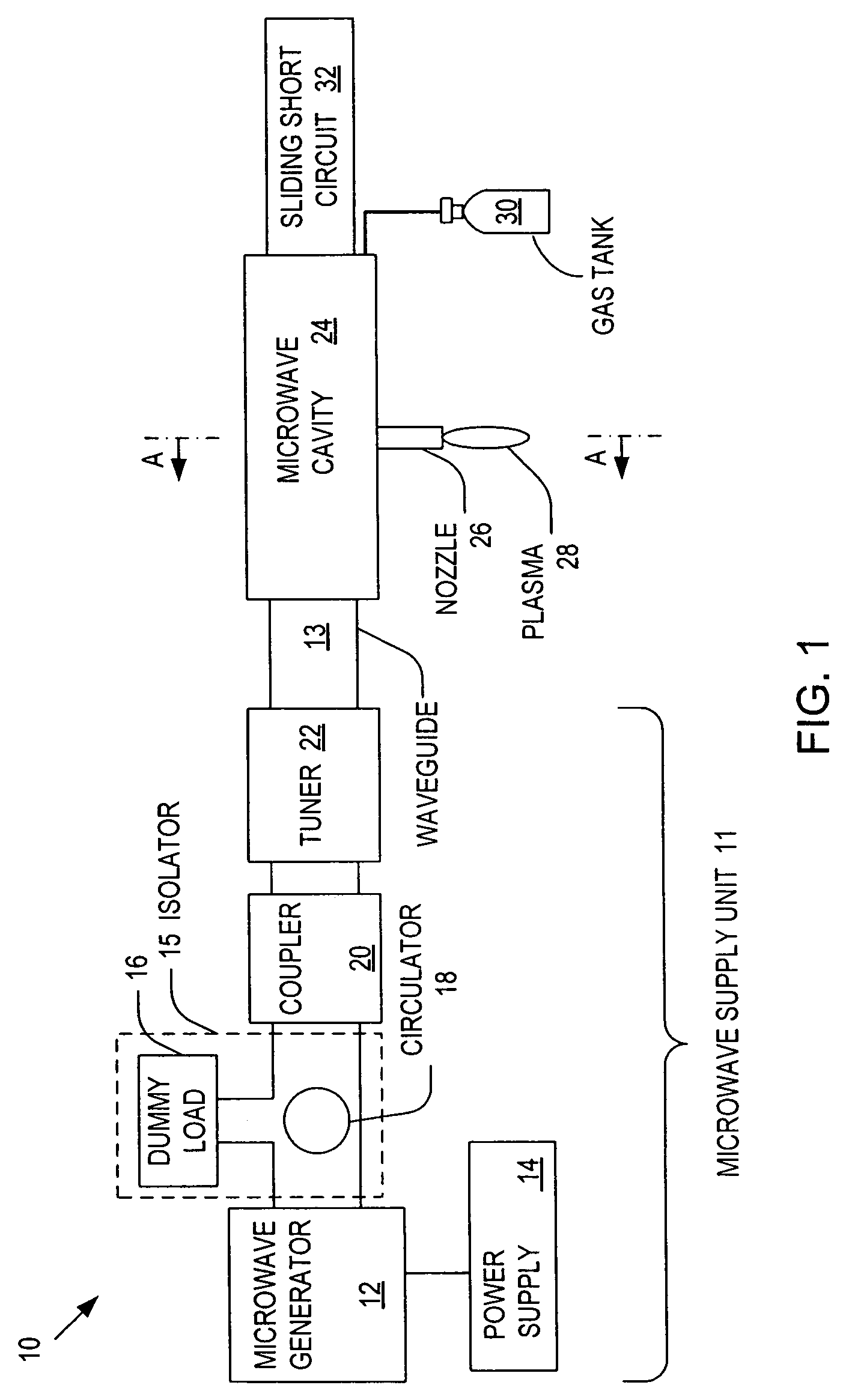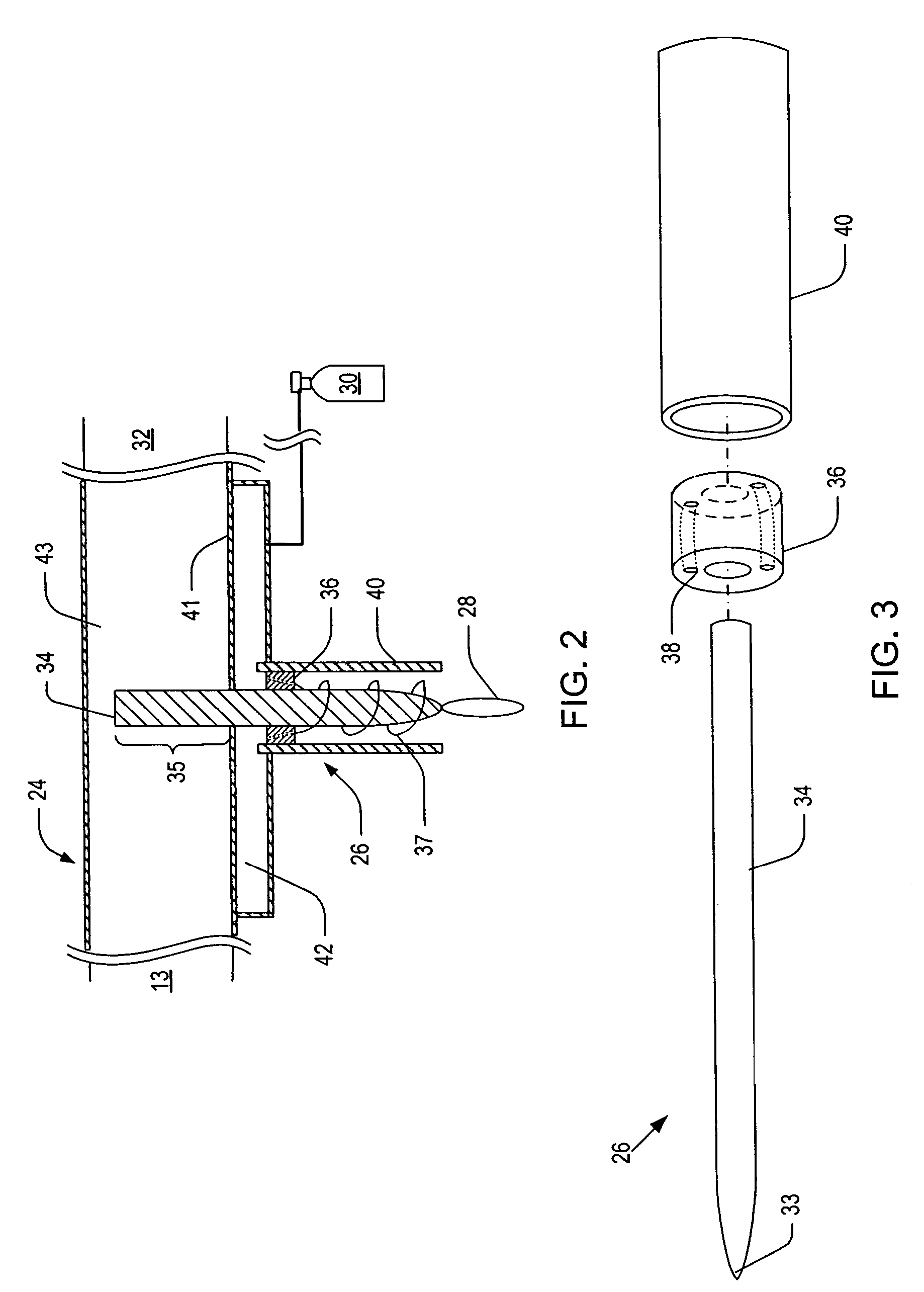Microwave plasma nozzle with enhanced plume stability and heating efficiency
a plasma nozzle and microwave technology, applied in plasma welding apparatus, plasma technique, plasma tools, etc., can solve the problems of one or more plasma temperatures, high operation cost, thermal sensitivity and destruction, etc., to achieve low per unit cost, reduce power consumption, and reduce operational costs
- Summary
- Abstract
- Description
- Claims
- Application Information
AI Technical Summary
Benefits of technology
Problems solved by technology
Method used
Image
Examples
Embodiment Construction
[0029]FIG. 1 is a schematic diagram of a system 10 for generating microwave plasma in accordance with one embodiment of the present invention. As illustrated, the system 10 may include: a microwave cavity 24; a microwave supply unit 11 for providing microwaves to the microwave cavity 24; a waveguide 13 for transmitting microwaves from the microwave supply unit 11 to the microwave cavity 24; and a nozzle 26 connected to the microwave cavity 24 for receiving microwaves from the microwave cavity 24 and generating an atmospheric plasma 28 using a gas and / or gas mixture received from a gas tank 30. A commercially available sliding short circuit 32 can be attached to the microwave cavity 24 to control the microwave energy distribution within the microwave cavity 24 by adjusting the microwave phase.
[0030]The microwave supply unit 11 provides microwaves to the microwave cavity 24 and may include: a microwave generator 12 for generating microwaves; a power supply for supplying power to the m...
PUM
| Property | Measurement | Unit |
|---|---|---|
| temperature | aaaaa | aaaaa |
| temperatures | aaaaa | aaaaa |
| transparent | aaaaa | aaaaa |
Abstract
Description
Claims
Application Information
 Login to View More
Login to View More - R&D
- Intellectual Property
- Life Sciences
- Materials
- Tech Scout
- Unparalleled Data Quality
- Higher Quality Content
- 60% Fewer Hallucinations
Browse by: Latest US Patents, China's latest patents, Technical Efficacy Thesaurus, Application Domain, Technology Topic, Popular Technical Reports.
© 2025 PatSnap. All rights reserved.Legal|Privacy policy|Modern Slavery Act Transparency Statement|Sitemap|About US| Contact US: help@patsnap.com



